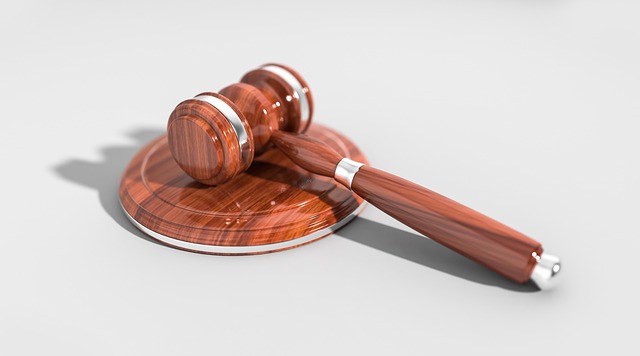Oregon's child welfare system is governed by comprehensive laws and policies that prioritize children's safety and well-being. The Oregon Department of Human Services (DHS) plays a central role in enforcing these rules, which cover removal, foster care, adoption, and more. Both parents and children have defined legal rights, with parents entitled to involvement in case planning and support services, while children receive protections for safety, health, education, and family interactions. Understanding these complex laws, accessible through Oregon Revised Statutes (ORS) and Oregon Administrative Rules (OAR), is crucial for families, caregivers, and professionals to ensure compliance and advocate for positive outcomes within the child welfare framework.
“Oregon’s child welfare system is governed by a comprehensive set of laws and policies designed to protect and nurture vulnerable youth. This practical guide offers an in-depth look at the key aspects of Oregon child welfare laws, ensuring parents and caregivers are equipped with the knowledge to navigate this crucial domain. From understanding legal rights and DHS procedures to deciphering vital statutes, this resource empowers individuals to fulfill their obligations effectively. By demystifying complex regulations, it equips readers with the tools necessary to advocate for themselves and the children in their care within the Oregon child welfare framework.”
- Understanding Oregon Child Welfare Laws: An Overview
- Legal Rights and Protections for Children and Families
- Navigating the Oregon Department of Human Services (DHS) and Its Role
- Key Statutes and Regulations Governing Child Welfare
- Practical Tips for Parents and Caregivers to Meet Legal Obligations
Understanding Oregon Child Welfare Laws: An Overview

Understanding Oregon Child Welfare Laws: An Overview
Oregon’s child welfare laws and policies are designed to protect and nurture children within the state, ensuring their safety, well-being, and stable future. These laws outline the legal rights of both children and parents while establishing clear guidelines for navigating child welfare services. Key components include the responsibilities of Oregon DHS (Department of Human Services) in providing support and resources to families, as well as the specific statutes that govern removal, foster care placement, and adoption processes. Understanding these legal obligations is crucial for all involved parties when facing child welfare issues.
The intricate web of Oregon child welfare laws can be complex, requiring careful consideration of each family’s unique circumstances. Navigating these regulations involves recognizing the rights of children to safe and stable homes while also understanding the rights of parents to due process and fair treatment. By familiarizing themselves with the relevant statutes, including those related to parental rights, removal criteria, and foster care procedures, individuals can better protect their legal interests and ensure compliance with Oregon DHS guidelines.
Legal Rights and Protections for Children and Families

In Oregon, both children and families have specific legal rights and protections under the state’s child welfare laws, which are outlined in the Oregon DHS statutes. Understanding these rights is crucial for anyone navigating the child welfare system. Parents or guardians have the right to be informed about any investigations, to participate in case planning, and to receive support services to maintain family stability. They also have the opportunity to challenge any decisions made regarding their children’s care.
Children involved in child welfare proceedings have the right to a safe and stable environment, access to medical and mental health services, and opportunities for education and meaningful interactions with their families. The legal obligations of Oregon DHS include ensuring these rights are upheld, providing regular reviews of cases, and working collaboratively with families to achieve positive outcomes. Navigating these child welfare policies requires a thorough understanding of the Oregon child welfare laws, which is why it’s essential to seek guidance from legal professionals experienced in this field.
Navigating the Oregon Department of Human Services (DHS) and Its Role

Navigating the Oregon Department of Human Services (DHS) is a crucial step in understanding and adhering to the state’s child welfare laws. As the primary agency responsible for child welfare services, DHS enforces policies that protect and promote the well-being of children across Oregon. Its statutes cover a range of issues, from removal and placement procedures to legal rights and obligations for involved parties. By familiarizing oneself with these guidelines, families, caregivers, and professionals can ensure they are in compliance and contribute effectively to the child welfare system.
The DHS plays a pivotal role in overseeing and implementing Oregon’s child welfare policies. They manage investigations, provide support services, and facilitate placements when necessary. Understanding these processes is essential for anyone involved with or affected by child welfare matters. Whether it’s navigating removal orders, knowing one’s rights as a foster parent, or recognizing the legal obligations of birth parents, knowledge of Oregon DHS statutes empowers individuals to actively participate in and advocate for positive outcomes within the child welfare framework.
Key Statutes and Regulations Governing Child Welfare

Oregon’s child welfare system is governed by a comprehensive set of laws and regulations designed to protect and nurture vulnerable children. The key statutes and regulations, such as those found in Oregon Revised Statutes (ORS) and Oregon Administrative Rules (OAR), lay out the legal framework for child welfare services provided by the Department of Human Services (DHS). These policies guide every aspect of child protection, from initial reports of abuse or neglect to the placement and permanency of children in foster care.
Understanding these laws is crucial for both parents and professionals involved in child welfare. Parents have specific legal rights regarding their interactions with DHS, while caseworkers are obligated to follow strict protocols to ensure fair and just treatment. Navigating Oregon child welfare laws can be complex, but it’s essential for anyone interested in protecting and advocating for the well-being of children within the state. Key statutes like ORS 419 focus on reporting requirements and definitions, setting clear expectations for identifying and addressing situations of abuse or neglect, while OAR regulations provide detailed procedures for case management and service delivery, ensuring that child welfare policies are consistently applied across the state.
Practical Tips for Parents and Caregivers to Meet Legal Obligations

Staying informed about Oregon child welfare laws is crucial for parents and caregivers to ensure they meet their legal obligations. The state’s Department of Human Services (DHS) outlines comprehensive child welfare policies that cover a range of issues, from removal procedures to foster care requirements. Understanding these statutes is essential, especially during challenging times when your family may be involved with child protective services.
To effectively navigate Oregon child welfare laws, parents should keep detailed records of all interactions with DHS, seek legal advice if needed, and familiarize themselves with the specific rights outlined in the relevant statutes. Regularly reviewing updates to Oregon DHS regulations is also vital to stay current on any changes that might impact your family’s situation. This proactive approach will help ensure compliance and the best possible outcome for your child.






